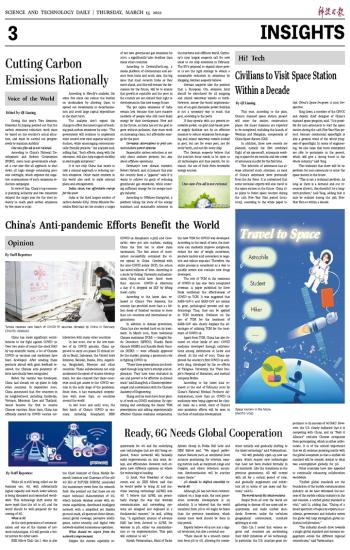
 |
During this year's Two Sessions, President Xi Jinping pointed out that the carbon emissions reduction work must be based on the country's actual situation, and must be carried out progressively to maintain stability.
One-size-fits-all is not rational
According to China's National Development and Reform Commission (NDRC), some local governments adopted a one-size-fits-all approach to shut down all high-energy-consuming projects overnight, which exposes the negative consequences of such emissions reduction campaigns.
In view of this, China's top economic planning authority and two ministries delayed the target year for the steel industry to reach peak carbon emissions by five years to 2030.
According to Moody's analysts, the extra five years can reduce the burden on steelmakers by allowing them to spread out investments in decarbonization and avoid large capital expenditure in the short term.
The analysts don't expect the change to affect the nation's goal of reaching peak carbon emissions by 2030. "The government will continue to implement strict control over steel capacity and production, while encouraging environmentally-friendly projects," the analysts said, adding that, "Such efforts, along with the extension, will also help support stability in steel supply and prices."
It is not only China that needs to take a rational approach to reducing carbon emissions. Other major emitters in the world also need to make rational plans and arrangements.
India: clean, but affordable energy for the poor
India is the third largest emitter of carbon dioxide (CO_2). Prime Minister Narendra Modi has set his country a target of net zero greenhouse gas emissions by 2070, a significantly later deadline than many other countries.
According to DowntoEarth.org, a media platform of environment and science from India and south Asia, the big issue that must concern India as they move ahead, and this will remain the discussion for the future, will be to ensure that growth is equitable and the poor in the country are not denied their right to development in this new energy future.
The per capita emissions of India remain low, because they have massive numbers of people who still need fossil energy for their development. Now and in the future, as India has set the goal to grow without pollution, they must work on increasing clean, but affordable energy for the poor.
Germany: alternatives to grid-connected shore power systems
Reasonable carbon reduction is not only about onshore projects, but also about offshore operations.
Germany's new climate minister, Robert Habeck, said in January this year the country faces a "gigantic" task if it wants to achieve its goals of reducing greenhouse gas emissions, while ensuring sufficient energy for its energy-hungry industry.
According to Offshore-Energy.biz, a platform telling the story of the energy transition and sustainable solutions in the maritime and offshore world, Germany's nine largest seaports call for new ideas to cut ship emissions in February. The EU's proposal to expand shore power is not the right strategy to obtain a sustainable reduction in emissions by shipping, German seaports believe.
German seaports take the position that a European CO_2 emission limit should be introduced for all seagoing and inland waterway vessels at berth. However, across-the-board implementation of on-grid shoreside power facilities is not a necessary way to reach that goal, according to the ports.
If they operate with 100 percent renewable power, on-grid land-based power supply facilities can be an effective measure to reduce emissions from seagoing and inland waterway vessels docked in port, but not for every port, not for every berth, and not for every ship.
The German seaports believe that the solution focus needs to be open to all technologies and thus permit, for instance, the use of fuels from renewable energy sources.


 Next
Next




